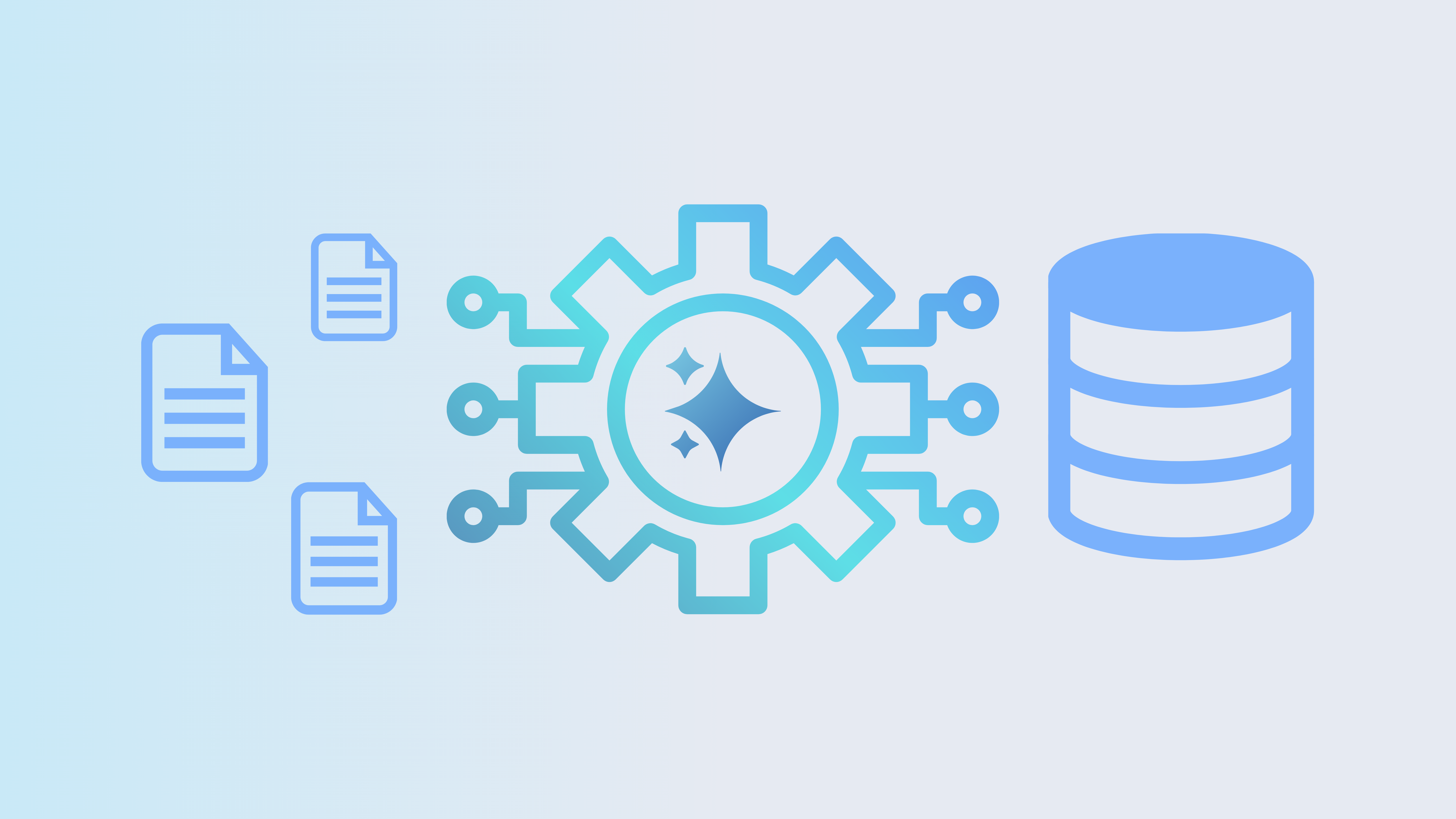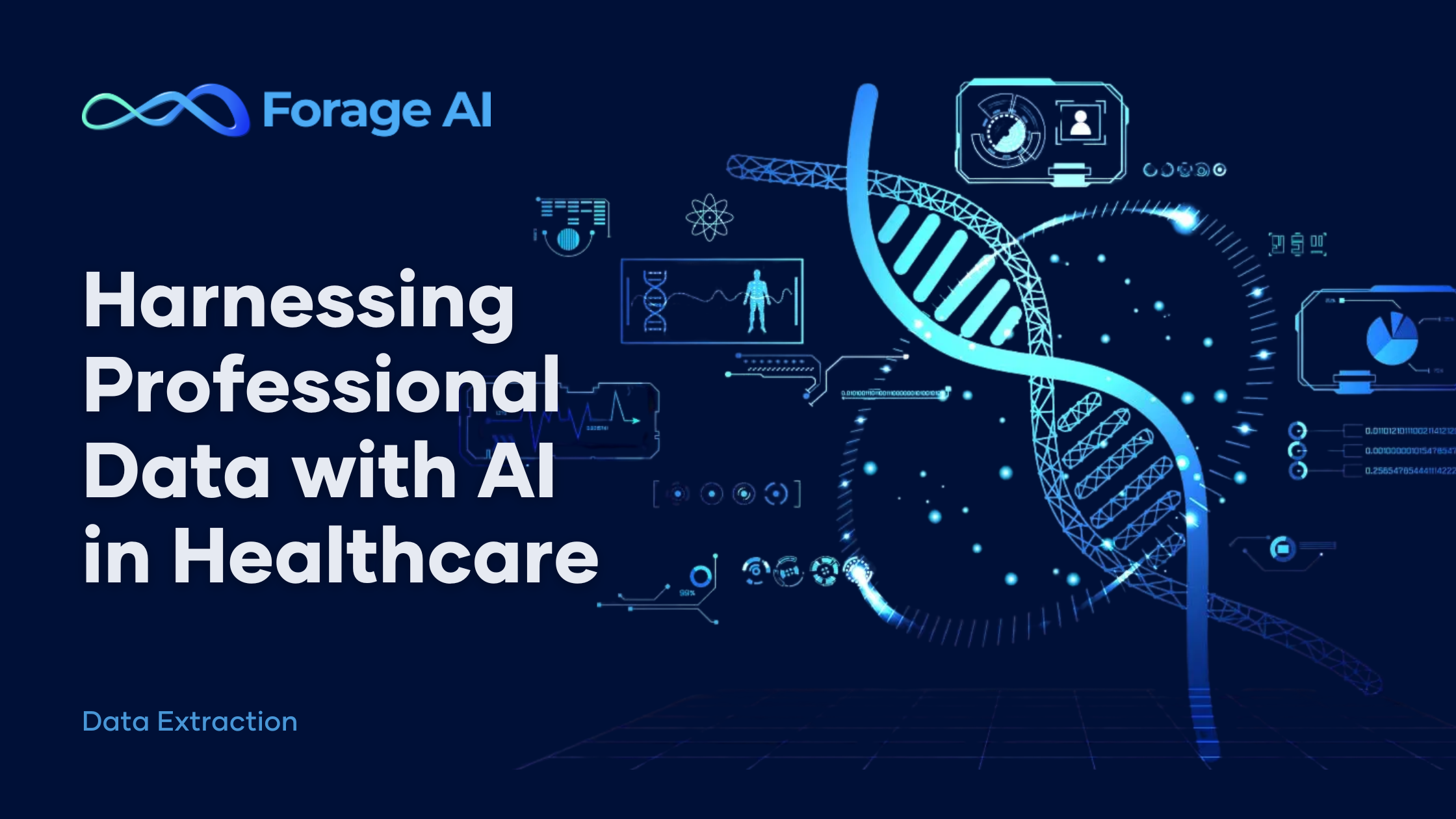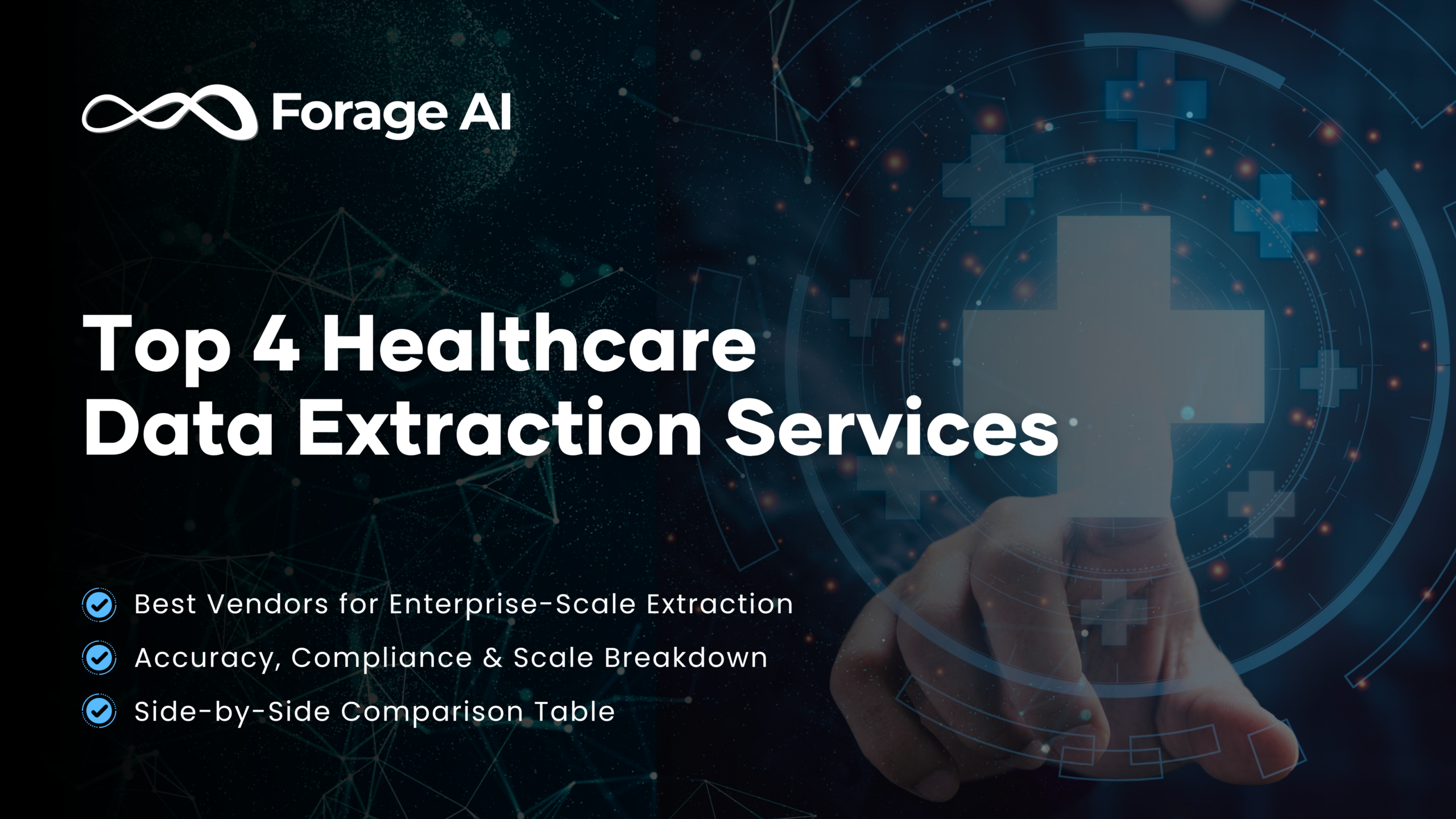Intelligent Document Processing (IDP) has undergone a massive revolution, powered by recent breakthroughs in AI. Advanced OCR, integrated with Large Language Models (LLMs) and Retrieval-Augmented Generation (RAG), is redefining how we extract, understand, and utilize information from documents. This post dives into the current state of AI-powered document processing, its challenges, and proposes an architecture that leverages cutting-edge technologies for robust, scalable solutions.
Spoiler alert: It’s not just better OCR or more annotated training sets anymore. The narrative has shifted to enabling businesses to do more with less data and build custom AI solutions tailored to their unique needs.
Preview: How AI is Rewriting the Rules of Document Processing
The document processing world has been turned on its head since the release of advanced models like GPT-4. Remember when we thought better OCR was the endgame? Those days are long gone. With the explosion of AI capabilities in natural language processing and computer vision, we’re seeing document processing transform from a rule-based, brittle process into a flexible, intelligent system capable of understanding context and handling complex documents.
Two recent developments caught our eye:
- The latest iteration of large language models with multimodal capabilities, allowing them to “see” and interpret images and documents.
- The emergence of Retrieval-Augmented Generation (RAG) systems, combining the power of LLMs with precise information retrieval.
These advancements got us thinking: how can we leverage these technologies to build next-generation document processing solutions? We conducted a comprehensive analysis of the current state of AI-powered document processing, and we’re excited to share what we’ve learned.
Part 1: The Current State of AI-Powered Document Processing
Let’s examine the key components shaping modern document processing. Each of these elements represents a quantum leap from traditional methods, offering new possibilities for higher accuracy, efficiency, and intelligence in handling documents.
Advanced Optical Character Recognition (OCR)
The evolution of OCR has been marked by a transition from rule-based systems to neural network architectures, dramatically improving accuracy on complex layouts and degraded images while reducing the need for language-specific training:
- Neural OCR Models: The transition to deep learning approaches like Convolutional Neural Networks (CNNs) and Recurrent Neural Networks (RNNs) has dramatically improved accuracy on complex layouts and low-quality images.
- Attention Mechanisms: By focusing on relevant parts of the image, these models can handle varied layouts with impressive precision.
- Transfer Learning: Pre-trained networks significantly reduce the need for task-specific training data, making OCR more accessible and adaptable.
- Post-Processing with Language Models: Integration with models like BERT or GPT pushes accuracy rates above 99% for many document types.
Layout Analysis and Document Understanding
Document structure comprehension has evolved from template matching and rule-based systems to sophisticated AI models that can understand diverse layouts without prior templates:
- End-to-End Transformer Models: Approaches like DLAFormer integrate multiple document analysis tasks (e.g., object detection, text region detection, logical role classification, and reading order prediction) into a single, unified framework, reducing cascading errors from multi-stage pipelines.
- Multimodal Fusion Approaches: Models like M2Doc and LayoutLMv3 fuse visual and textual features at various levels (pixel, block, etc.), enabling more comprehensive document understanding. These models often use self-supervised pre-training on large document datasets.
- Graph Neural Networks (GNNs): Application of GNNs to model document layout as a graph, capturing spatial relationships between document elements more effectively than traditional grid-based approaches.
- Large Language Models (LLMs): Incorporation of LLMs like GPT models for zero-shot learning capabilities in document understanding tasks, reducing the need for extensive training datasets.
- Hybrid Approaches: Combining top-down (e.g., object detection) and bottom-up (e.g., graph-based) methods for more comprehensive document analysis, particularly for complex tasks like logical structure analysis and reading order prediction.
Information Extraction
Recent advancements in Large Language Models (LLMs) have redefined information extraction, moving from pattern matching and named entity recognition to context-aware, generative approaches that can adapt to new document types with minimal training:
- Zero-Shot and Few-Shot Learning: Models like GPT-3 and its successors demonstrate remarkable few-shot (only a few examples to learn from) and zero-shot learning (with no direct examples, only similar cases) capabilities, adapting to new document types and extraction tasks with minimal or no specific training.
- Prompt Engineering: Advanced prompt engineering techniques enable fine-grained control over LLM outputs, allowing for precise information extraction without extensive fine-tuning.
- Domain-Specific LLMs: Development of domain-specific LLMs (e.g., for legal or financial documents) that combine general language understanding with specialized knowledge, improving extraction accuracy in niche areas.
Retrieval-Augmented Generation (RAG)
RAG systems represent a fusion of information retrieval and text generation, addressing the limitations of pure language models by grounding responses in specific document content:
- Dense Passage Retrieval: Locates contextually relevant information in complex documents without relying on exact keyword matches. Essential for extracting accurate data from lengthy contracts or technical reports.
- Cross-Attention Mechanisms: Enable context-aware processing by dynamically focusing on relevant document sections during information extraction. Critical for interpreting data accurately in documents where meaning depends on contextual relationships.
- Iterative Refinement: Performs multiple passes over a document, progressively refining extracted information. Vital for processing intricate financial statements or legal documents where precision is non-negotiable.
Part 2: Challenges in AI-Powered Document Processing
AI’s capabilities in document processing are nothing short of revolutionary, proudly earning the “disruptive” label. But let’s not get carried away – even with these impressive strides, we’re still navigating uncharted waters. The continuous development, innovations, and experiments bring both exciting possibilities and unforeseen hurdles.
The following table outlines the critical challenges in AI-powered document processing, highlighting key focus areas and pivotal aspects:
| Challenge | Key Focus | Critical Aspect |
|---|---|---|
| Data Privacy and Security | Robust encryption and access control | Maintaining data integrity in cloud-based services |
| Computational Efficiency at Scale | Optimize for efficient inference without sacrificing accuracy | Handling diverse document types and formats |
| Interpretability and Compliance | Explainable AI systems with transparent decision-making | Comprehensive audit trails for regulatory compliance |
| Edge Case Management | Improve model generalization for outliers | Minimal retraining requirements |
| Legacy System Integration | Seamless integration of AI-powered solutions | Minimize disruption to existing processes |
| Human-AI Collaboration | Balancing AI automation with human oversight | Effective handling of complex or nuanced documents |
| Contextual Understanding in LLMs | Maintaining context across long documents and varied formats | Enhancing LLM accuracy through fine-tuning and RAG |
| Handling Unstructured Data with LLMs | Optimizing LLMs to extract meaning from unstructured data | Balancing precision and generalization for complex document types |
| Ethical AI and Compliance in LLMs | Ensuring explainable, fair, and transparent decision-making | Handling biases and complying with privacy laws |
These challenges underscore the complexity of implementing AI in document processing at an enterprise scale. Recognizing these multifaceted demands, we’ve conducted extensive research to review an optimal architecture that balances these challenges effectively. The proposed framework is designed to address each of these critical factors while delivering a scalable, robust solution for intelligent document processing.
Part 3: Proposed Architecture for Modern Document Processing
The following architecture for a state-of-the-art document processing solution, is designed to leverage the strengths of each AI component while addressing their limitations:
- Document Input Layer:
- Supports diverse input formats (scanned images, PDFs, digital documents)
- Implements adaptive preprocessing based on input quality and type
- Advanced OCR and Layout Analysis:
- Utilizes ensemble of specialized neural OCR models
- Employs graph neural networks for layout understanding
- Integrates language model-based post-processing for error correction
- Multimodal Document Classification:
- Leverages multimodal transformers for content and layout-based classification
- Implements few-shot learning capabilities for adaptability to new document types
- LLM-Powered Information Extraction:
- Utilizes large language models with advanced prompt engineering
- Incorporates domain-specific LLMs for specialized document types
- Implements zero-shot and few-shot extraction capabilities
- RAG-based Validation and Enrichment:
- Employs dense passage retrieval for relevant information lookup
- Utilizes iterative refinement for improved accuracy
- Implements cross-attention mechanisms for context-aware validation
- AI Orchestration Layer:
- Manages model selection and workflow based on document type and task
- Implements efficient batching and queuing for optimized resource utilization
- Provides real-time performance monitoring and dynamic resource allocation
- Human-in-the-Loop Integration:
- Implements interactive interfaces for human experts to guide and correct AI decisions
- Provides real-time visibility into AI processing steps for human oversight
- Enables seamless handoff between AI and human operators for complex cases
- Model Management and Continuous Learning:
- Implements A/B testing framework for model evaluation
- Utilizes active learning for targeted model improvements
- Provides versioning and rollback capabilities for model deployments
Key features of the AI-Powered Solutions
- Adaptive Processing: Dynamically selects optimal models and workflows based on document characteristics and task requirements, enabling businesses to do more with less data.
- Targeted Model Training: Utilizes advanced few-shot and zero-shot learning techniques, allowing rapid adaptation to new document types with minimal examples.
- Scalability: Leverages cloud-native technologies for seamless scaling, supporting both horizontal and vertical scaling strategies to handle varying document volumes efficiently.
- Privacy-Preserving: Implements end-to-end encryption and supports on-premises deployment, ensuring sensitive data remains protected while enabling AI-powered analysis.
- Intelligent Human-AI Collaboration: Dynamically determines when human expertise is necessary, optimizing the balance between automation and expert input for complex or nuanced documents.
- Continuous Learning Loop: Incorporates human corrections and feedback into the AI model’s training cycle, constantly improving performance and reducing the need for extensive retraining.
- Custom AI Solution Integration: Provides flexible APIs and workflows, allowing businesses to tailor the system to their unique document processing needs.
Implementation Considerations
When implementing this architecture, organizations should consider the following:
- Intelligent Model Selection: Choose between open-source models, custom-trained solutions, and commercial APIs based on performance, cost, privacy requirements, and specific document types. Consider models with few-shot learning capabilities for rapid adaptation.
- Scalable Infrastructure: Implement GPU acceleration for on-premises deployments or leverage serverless options for cloud-based solutions. Ensure the infrastructure can handle varying document volumes and complexities efficiently.
- Robust Data Pipelines: Design comprehensive data pipelines for secure training data collection, efficient model retraining, and continuous performance monitoring. Incorporate feedback loops for ongoing model improvement.
- Flexible API Design: Create a versatile API that supports both batch processing and real-time document analysis. Ensure compatibility with legacy systems and ease of integration for custom enterprise workflows.
- Compliance and Auditing: Implement thorough logging and traceability features to meet regulatory requirements. Develop explainable AI components to provide transparency in decision-making processes.
- Privacy-Preserving Techniques: Utilize advanced encryption methods and access control mechanisms to protect sensitive document data throughout the processing pipeline.
- Human-AI Interaction Interface: Design intuitive interfaces for human experts to review, correct, and guide AI decisions efficiently, optimizing the balance between automation and expert input.
Forage AI: Harnessing Generative AI for Enterprise-Grade Document Processing
While we’ve explored the cutting-edge technologies reshaping document processing, you might be wondering: “How does Forage AI fit into this landscape?” Great question! Let’s unpack how we’re putting these innovations to work in our document processing solution.
Bridging the Gap Between LLM Power and Enterprise Needs
LLMs are revolutionizing the document processing landscape, offering unprecedented scalability, broadening accessibility, and improving accuracy. However, their inherent creativity can be a double-edged sword, especially in enterprise applications where consistency and reliability are non-negotiable. This is where Forage AI breaks new ground.
We’ve developed a unique approach that synthesizes the power of LLMs while ensuring enterprise-level reliability. Here’s how we’re transforming document processing:
- Intelligent Model Orchestration: Our system dynamically selects and combines the most appropriate AI models for each task, enabling businesses to do more with less data and adapt quickly to new document types. This directly addresses the Computational Efficiency at Scale challenge.
- Controlled Creativity: We’ve implemented sophisticated guardrails that channel the creative power of LLMs into reliable, consistent outputs, eliminating AI “hallucinations” in critical business documents. This feature tackles the Interpretability and Compliance challenge head-on.
- Context-Aware Processing: Our solution leverages advanced contextual understanding to extract information accurately from complex, unstructured documents, significantly improving accuracy and reducing manual intervention. This capability is crucial for handling the Edge Case Management challenge.
- Adaptive Learning: Forage AI’s document processing evolves with your business. Our system incorporates few-shot learning techniques and continuous feedback loops, rapidly adapting to new document types and constantly improving performance. This feature addresses the challenge of Handling Unstructured Data with LLMs.
- Enterprise-Grade Security: We’ve integrated robust encryption and access control mechanisms throughout the processing pipeline, ensuring your sensitive document data remains protected, whether on-premises or in the cloud. This directly tackles the Data Privacy and Security challenge.
- Seamless Integration: Our flexible APIs and customizable workflows allow for smooth integration with existing enterprise systems, minimizing disruption while maximizing the benefits of AI-powered processing. This feature addresses the Legacy System Integration challenge.
- Intelligent Human-AI Collaboration: We’ve optimized the balance between AI automation and human expertise, with intuitive interfaces that allow for efficient review and correction of AI outputs when needed. This capability is key to addressing the Human-AI Collaboration challenge.
- Contextual Relevance with RAG: Our integration of Retrieval-Augmented Generation systems ensures that AI-generated outputs are always grounded in your organization’s most current and relevant information, enhancing accuracy and reducing the risk of outdated or irrelevant responses. This feature is crucial for maintaining Contextual Understanding in LLMs.
Forage AI’s advanced ecosystem empowers you to unlock new levels of efficiency and insight that you’ve been envisioning. If you are exploring transformative opportunities in AI and automation for document processing, we have exactly the cutting-edge solutions to propel your operations forward. Just getting started and curious about the possibilities for upgrading your automation processes? Our comprehensive automation product suite offers everything to kickstart your journey.
Final Thoughts
AI-powered document processing isn’t just hype – it’s a reality that’s transforming how organizations handle information. By leveraging the latest advancements in AI, particularly in large language models, computer vision, and RAG systems, we can build document processing solutions that are more accurate, flexible, and intelligent than ever before.
Our proposed architecture provides a starting point for organizations looking to modernize their document processing capabilities. As AI continues to advance, we can expect even more powerful and efficient solutions in the future.
The document processing landscape is evolving at breakneck speed, and staying ahead of the curve is no longer just about adopting the latest AI models. Intelligently integrating these technologies into your existing workflows by continuously refining your approach based on real-world performance, and leveraging the synergy between AI capabilities and human expertise is the key. As we push the boundaries of what’s possible in information extraction and analysis, organizations that embrace this new standard will access unprecedented levels of efficiency and insight from their document-based data.
Ready to see how Forage AI can transform your document processing with the perfect blend of AI power and human insight?





